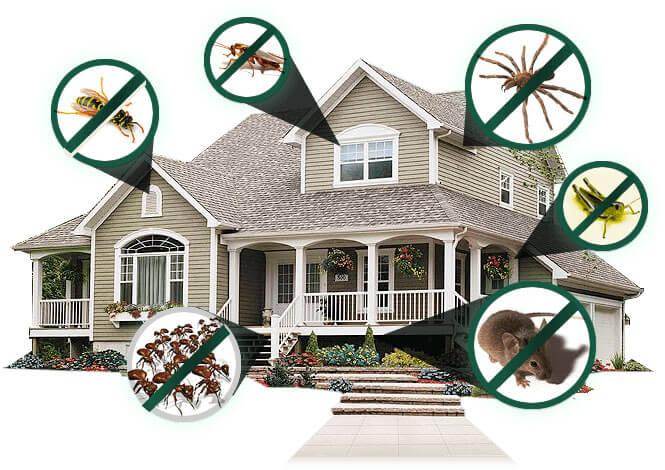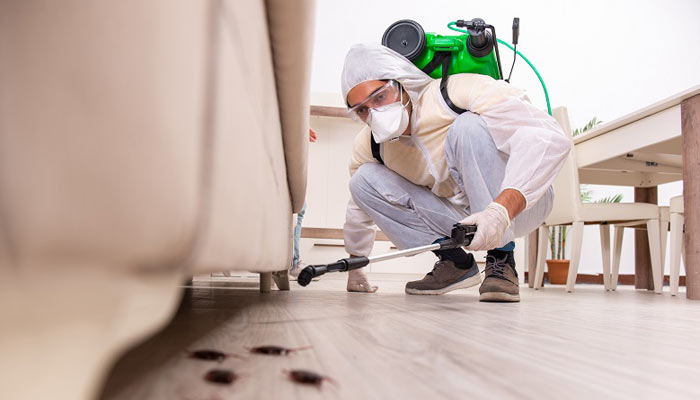A1 Commercial Pest Control Portland - Reliable Bed Bug Solutions for Organizations
A1 Commercial Pest Control Portland - Reliable Bed Bug Solutions for Organizations
Blog Article
Efficient Insect Control Providers: A Thorough Appearance at Elimination Techniques and Prevention Actions
In the realm of pest control services, the successful management of problems requires a precise technique that incorporates various methods and steps for both removal and prevention. From Integrated Bug Monitoring (IPM) strategies that focus on lasting services to chemical extermination methods made for targeted removal, the toolbox against insects is huge and multifaceted. Biological control approaches and physical avoidance steps offer different paths to effectively combating unwanted intruders. Nevertheless, the key to a detailed bug control strategy lies not simply in the techniques themselves, however likewise in the careful expert examination procedures that come before and educate them. By comprehending the complexities of each method and how they interaction, one can truly realize the intricacy and performance of modern bug control services.

Integrated Parasite Administration (IPM) Approaches
Integrated Pest Management (IPM) Techniques incorporate a comprehensive method to pest control that concentrates on monitoring, control, and avoidance approaches to efficiently handle bug populaces. By integrating different techniques, IPM aims to reduce the impact of insects while likewise minimizing the reliance on chemical pesticides. Prevention exists at the core of IPM, highlighting methods like correct hygiene, maintenance of health, and securing entry factors to prevent bugs from infesting buildings. Tracking plays a crucial function in IPM by routinely identifying and checking pest levels to establish the appropriate treatment limits. Control techniques in IPM focus on the use of physical, biological, and cultural approaches prior to turning to chemical treatments as a last hotel. These approaches include introducing natural killers, habitat alteration, and using capturing gadgets to maintain bug populations in check. Generally, IPM fosters a lasting and eco aware method to pest monitoring, promoting lasting solutions that protect both human health and wellness and the ecosystem.
Chemical Extermination Methods
Chemical extermination methods are commonly employed in insect control services to properly eliminate pest populaces that pose a risk to human health and residential or commercial property. These methods involve making use of numerous chemical substances especially developed to target and eliminate insects such as pests, rodents, and other unwanted animals. The application of pesticides, pesticides, rodenticides, and other chemical agents is very carefully regulated to ensure optimum effectiveness while decreasing risks to humans, pet dogs, and the setting.
Among the essential benefits of chemical extermination strategies is their capability to supply fast and targeted results, making them specifically helpful in cases of severe infestations or immediate parasite control demands - a1 portland pest control bed bugs. However, it is necessary to stress the significance of correct handling, application, and disposal of these chemical items to stop unexpected harm
In addition, integrated pest management (IPM) methods often integrate chemical extermination methods with various other techniques such as sanitation, habitat alteration, and organic controls to develop a thorough and sustainable insect control approach. By incorporating chemical elimination strategies carefully within an IPM structure, insect control solutions can properly take care of parasite populaces while decreasing potential threats to human health and wellness and the atmosphere.
Biological Pest Control Methods
Utilizing Read More Here all-natural predators and parasites to handle pest populaces is a lasting approach called biological parasite control. This approach utilizes the all-natural mechanisms of the ecosystem to regulate parasite populaces without depending on synthetic chemicals. One usual organic control method involves introducing all-natural enemies of the target insect species, such as ladybugs for aphid control or nematodes for termite invasions. These all-natural killers eat the parasites, aiding to maintain their populaces in check.
An additional efficient organic control technique is making use of microbial insecticides. These are naturally happening microorganisms, such as viruses, fungis, and microorganisms, that especially target and contaminate particular parasite varieties. By using these microbial agents, parasite see this site populaces can be properly decreased without damaging useful microorganisms or triggering damage to the environment.
Physical Insect Avoidance Actions
Implementing physical bug prevention measures entails making use of obstacles and structural modifications to discourage parasites from infesting a home or going into. Setting up door sweeps, screens on windows, and sealing fractures in the foundation can aid protect against bugs like pests and rodents from gaining accessibility inside your home.
An additional physical avoidance step is the usage of obstacles like fence to keep bigger parasites such as raccoons or deer away from the property. By implementing these physical parasite avoidance steps, property owners can considerably reduce the threat of parasite infestations and the damage they can create.
Expert Pest Assessment Treatments
Performing extensive and systematic pest assessments is a fundamental aspect of professional bug management methods. Specialist parasite inspectors are educated to carefully take a look at buildings for indicators of problems, identifying pest varieties, entry factors, and favorable conditions.

Conclusion
To conclude, reliable insect control solutions employ a variety of techniques, consisting of Integrated Pest Administration strategies, chemical extermination approaches, organic controls, and physical avoidance actions. Specialist bug assessment treatments play a vital function in determining and resolving pest problems in a prompt manner. By executing a mix of these strategies, residential property owners can successfully protect against and take care of pest problems.
From Integrated Bug Administration (IPM) methods that focus on sustainable options to chemical extermination techniques made for targeted removal, the toolbox against insects is complex and large.Integrated Bug Management (IPM) Approaches include a thorough technique to pest control that focuses on surveillance, control, and avoidance methods to properly manage parasite populations.Chemical elimination methods are generally employed in pest control solutions to effectively remove insect populaces that here are the findings present a threat to human health and home.Employing all-natural predators and bloodsuckers to manage bug populaces is a sustainable method understood as organic bug control.In conclusion, effective insect control solutions utilize a range of methods, including Integrated Insect Monitoring techniques, chemical elimination methods, biological controls, and physical avoidance procedures.
Report this page